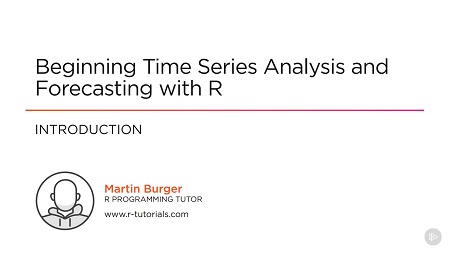
English | MP4 | AVC 1280×720 | AAC 44KHz 2ch | 2h 05m | 324 MB
Time series data is found in any field. This course will teach you how to handle this specific type of data and how to create forecasting models.
Do you want to create a time series model and use it for forecasting? Nearly everyone working in a quantitative field has to work with time series data. This sort of data has specific rules, functions and visualizations which you will learn in this course, Beginning Time Series Analysis and Forecasting with R. First, you’ll learn about time series data, which is data captured along a timeline. That means time series data has a specific order (a timestamp) which allows different types of analysis and modeling. Next, you’ll explore how these models can be used to create forecasts which are widely used in many fields ranging from finance to academia or medicine. R is the favorite tool among data scientists to do time series analysis. Knowing this, you’ll finally touch on the variety of add on packages that were created especially for that purpose, most prominently the package “forecast” by J Hyndman. By the end of this course, you’ll not only know about the underlying statistics of time series but also about models like ARIMA, exponential smoothing or simpler types of models. Of course you will use these models to create forecasts!
Table of Contents
01 – Course Overview
02 – Intro
03 – Course Overview and Prerequisites
04 – Time Series Analysis Background
05 – Course Datasets
06 – Summary
07 – Intro
08 – Time Series Datasets and Lags
09 – Example Plots
10 – Basic Statistics for Time Series
11 – Time Series Visualization
12 – Stationarity
13 – Autocorrelation
14 – Summary
15 – Intro
16 – 3 Simple TS Models
17 – Model Comparison
18 – Model Residuals
19 – Summary
20 – Intro
21 – ARIMA Models Intro
22 – ARIMA in R Demo
23 – Exponential Smoothing with ETS
24 – Course Summary
Resolve the captcha to access the links!